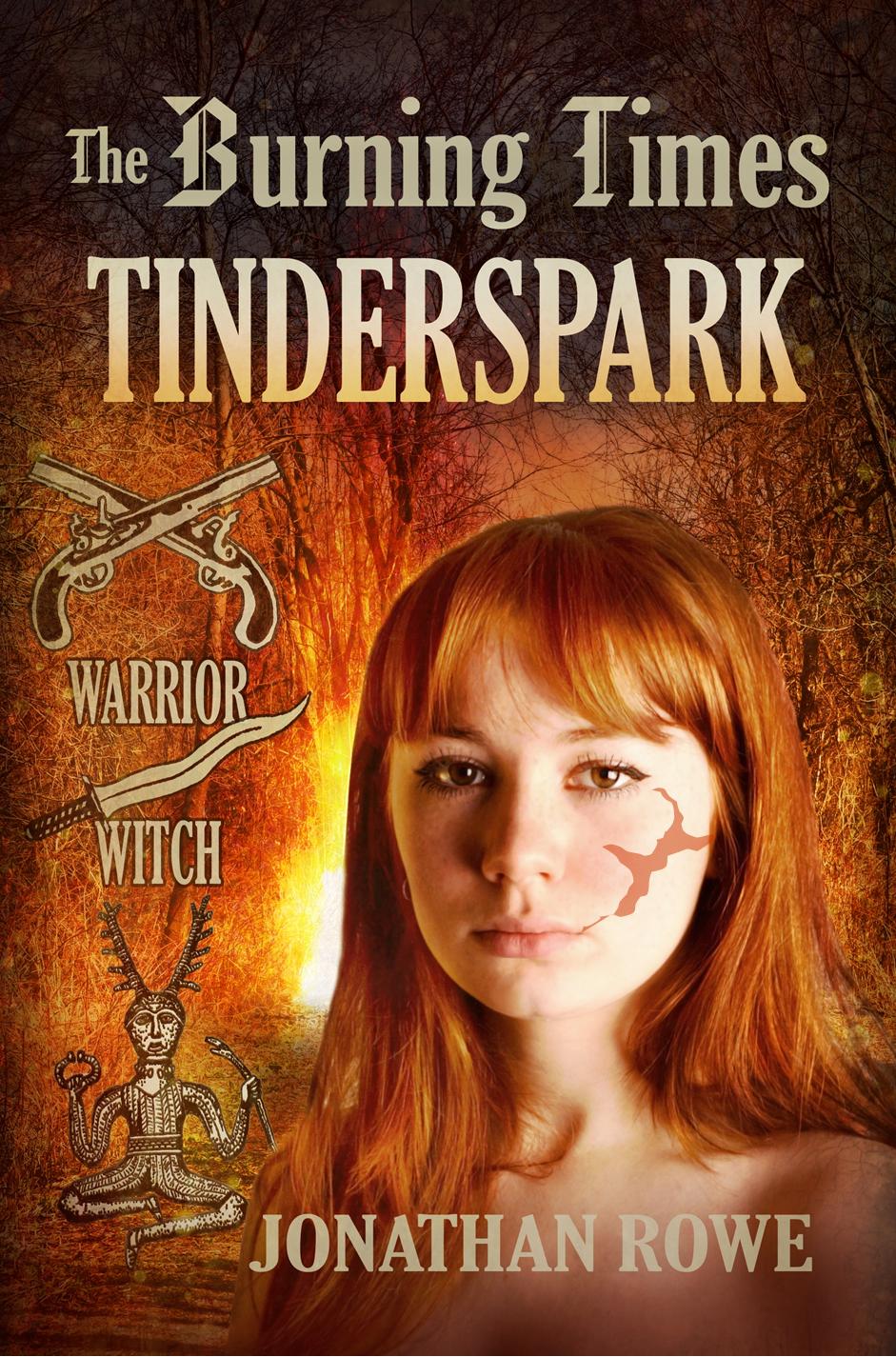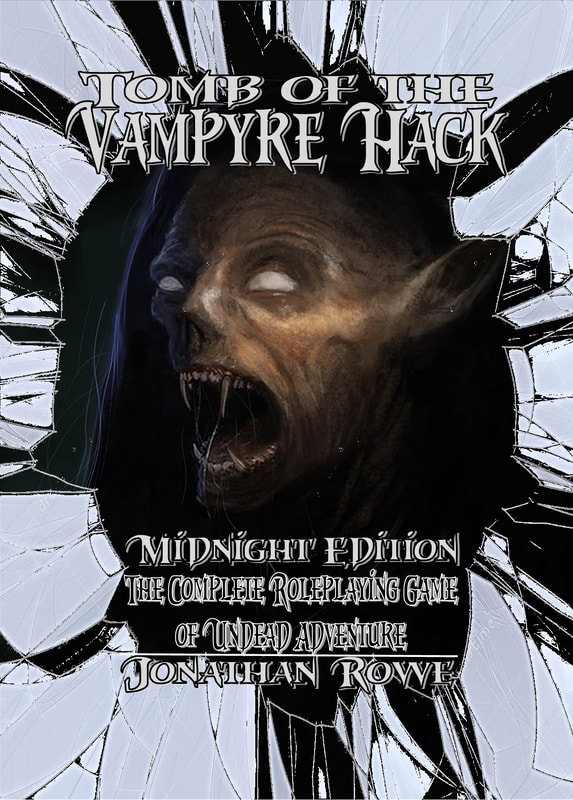|
The Rules for Forge are summarised on the website. This post is about how they work in practice and whether they need tweaking. The PC Races are a whole other matter and I'll consider them on a later post. Combat: keep it simple Combat is first up, as it should be in a good fantasy heartbreaker (see the previous post for a discussion of Ron Edwards' useful term). Forge seems to stumble onto a mechanic that's beautifully simple. All attackers have an Attack Value (AV) and all defenders have a Defence Value (DV). Both numbers are usually in single figures and might be in low negatives in the case of feeble PCs. If your AV is the same as the defender's DV, you need to roll 10+ on a d20 to hit. Each point of difference in the defender's favour increases the target by 1, in the attacker's favour lowers it by 1. This is the sort of arithmetic a child can do in their head and it makes D&D's THAC0 convention (an innovation still 5 years away when Forge came out) looks like calculus by comparison. Yet the authors don't seem to have realised how simple they've made things and feel the need to include a D&D-style table so people can cross-reference AV and DV to find out their target number. This is one of the "unquestioned assumptions" that Edwards finds so prolific in heartbreaker RPGs: D&D did it this way, so this is the way it must be done - consult your attack matrices! By the way: don't forget the Leadership skill that adds +1 to AV for all allies. Someone needs to invest in this, despite its 2 skill slot cost. Defensive Value: not thought through DV is split into DV1 (adding your Armour Rating, your Shield Rating and your Awareness Modifier) and DV2 (just your Armour Rating); DV2 is used when enemies ambush you, attack from the flanks or the rear or use undodgeable area attacks or magical effects. Missile attacks are also supposed to target DV2. Critic Thomas Wilburn spots a problem here straight away: "ranged weapons use the second value, which is always easier to hit than the first ... [but] it should never be easier to hit someone in a hectic combat situation with a bow and arrow ... than with a sword." Leaving aside the contention that DV2 is always easier to hit than DV1 (if you have the Tactics skill it could actually be more difficult), Wilburn is right and the rule that "the advantage of missile attacks is that the character needs only to strike his opponent's DV2, making it easy to hit his enemy" (p45) is nonsensical. The advantage of missile attacks is that you are at a safe distance and get to attack your enemy while they are unable to attack you. Shields and dodging are perfectly effective against most missile attacks. DV1 should be used. Once this house rule is in place another conundrum reveals itself. The rules (p45) state that only Armour contributes to DV2 and Awareness modifiers are ignored - but what about Awareness penalties? Characters with an Awareness of 4.4 or less have a -1 penalty to DV1, -2 at 3.5 and -3 at 2.8. What happens to that? If you attack an inattentive/half-blind/day-dreaming character, it makes sense that it's easier to hit because their DV1 is so low. But if you sneak up behind them, should it suddenly get harder to hit their DV2, because their inattentiveness no longer applies? Surely, the whole point about being inattentive is that you're more vulnerable, not less, to attacks from behind? I think we can house rule that DV2 ignores any bonus from Awareness, but it still retains any penalty. Don't forget the Tactics skill that adds +1 to DV2 and lets you add your Awareness bonus to your DV2. Probably worth it if you have a high Awareness, especially when you think about what Backstabbing and Assassination can do (see below). Actual Damage: big implications Combat against armoured opponents is interesting. Most of the damage you deal is directed at the armour itself and a token amount - "actual damage" - gets through to lower the target's Hit Points. A lot of opponents will have scrappy padded armour (up to 10 Armour Points) or leather (20 AP) but combat becomes protracted when they have metal armour (50 AP for chain mail, 70 for plate armour). As the armour disintegrates,it offers less protection, so DV drops, making it easier to hit. Actual damage is equal to the number of damage dice rolled, so a short sword (1d6 damage) deals 1 actual damage, but a spear (2d4 damage) deals 2 actual damage and a two-handed sword (3d6 damage) deals 3 actual damage. Watch out for the bite of a Manticore (5d4 damage, 5 actual). Since a typical NPC has 15HP, a fight goes like this: you slowly chip away at their HP at first, but hit more often as their DV drops and, once the armour gives way, damage goes entirely to HP and the fight ends suddenly. Actual damage makes a big difference in combat. Against a metal armoured opponent, you might never remove their APs entirely, so you probably need to defeat them through actual damage alone. That means you have to hit a typical NPC 15 times in a fight, but only 7 or 8 times with a spear and only 5 times with a two-handed sword. Even if you only swing that two-handed sword every other round, the actual damage output is still better than a normal sword that you swing every round. Ghantus who get to attack every round with two-handed weapons have a hideous advantage! Things that boost actual damage help immensely. Rolling a natural 20 is significant: the damage is applied twice, once to the armour and again as actual damage in its entirety. A single natural 20 dramatically revises the odds in a fight. Yes, the attacker's weapon is 'notched' in the process; most weapons can take 2-5 'notches' before disintegrating but those deadly spears disintegrate on the first 'notch'. Two skills are useful here. Backstabbing is used to make attacks against a man-sized or smaller target's DV2 (so someone else needs to engage the enemy front-on) and deals +1 actual damage for every two levels of skill (i.e. +1 at 1st level, +2 at 3rd, +3 at 5th). This lends itself to a tactic whereby one PC focuses on backstabbing and makes flank attacks on enemies being engaged by other PCs. Even the +1 actual damage for low-level backstabbing is significant. Great news: successful Backstabbing gives you an experience check to your Backstabbing skill AND your Melee Weapons skill, so there's no reason not to do it if you can. Ironically, by making backstabbing a tactic you can employ every round so long as you're in the right position rather than a one-off benefit you gain when you sneak up on someone, Forge anticipates the way D&D 4th & 5th edition would reinterpret backstabbing. Assassination comes in two flavours, Melee and Missile. This involves imposing a -5 AV penalty on yourself (-8 AV for missiles), but gaining +1 actual damage per skill level along with a 2%/level chance of killing a man-sized or smaller opponent outright. You can attempt this every round. You cannot kill larger opponents (or those with 50+HP) or undead outright but you still get the actual damage bonus. Also, you don't get the experience check to your basic weapon skill when you assassinate. It remains to be seen whether Assassination is a broken skill; it's certainly something that PCs would be mad to ignore: it takes up 3 skill slots, compared to 2 for Backstabbing and 1 for ordinary Weapon skills. If you don't spend 10 skill slots on Magic, you would be well-advised to spend 8 on getting Backstabbing and both types of Assassination. I also wonder about NPCs employing Assassination. Are players happy to have their PCs killed outright on a lucky roll? Or do the designers envisage that only PCs will ever employ Assassinate? You could house rule this by declaring that victims don't die instantly but drop to 0HP and start the process of bleeding out. For most NPCs, that's the end of the road, but PCs can expect their companions to save them. Don't forget about crossbows. It's easy to miss (p33), but crossbows inflict only 1 point of damage to armour, with the rest being actual damage. Finally, there are spells that deal actual damage. Beast Magic has Quills (p73) and Wounding (p74), both 1st level spells. Elementalism has Fiery Touch (p102), Grom Warriors have Minor Harm (p135) and Necromancers have Pain (p148), all at 1st level. You can see the value in "pumping" these spells for extra damage, even if its just +1 (Beast Magic), +2 (Necromancy) or +3 (Elementalism). Fights against armoured opponents are dramatically curtailed when these spells are in play. This provides a broad template for Forge combat. You cannot beat two-handed swords against armoured opponents and spears are better than swords, but carry more than one because they break when 'notched'. Use Leadership to raise everyone's AV and Tactics to improve your DV2. If you can free yourself from opponents, engage armoured enemies on the flank using Backstabbing. If you have a high AV (perhaps you are a Berserker or just have a high Dexterity), then Melee Assassination becomes a valuable alternative to conventional attacks, especially against armoured foes. An archer hanging back and employing Missile Assassination can be decisive. Mages should select an actual damage spell and re-roll it until it's reliable; consider "pumping" it to end fights against armoured opponents that would otherwise drag out.
0 Comments
Leave a Reply. |
30 Minute Dungeons
Essays on Forge
FORGE Reviews
OSR REVIEWS
White Box
THROUGH THE Hedgerow
Fen Orc
I'm a teacher and a writer and I love board games and RPGs. I got into D&D back in the '70s with Eric Holmes' 'Blue Book' set and I've started writing my own OSR-inspired games - as well as fantasy and supernatural fiction.. Archives
July 2024
Categories
All
|




 RSS Feed
RSS Feed
























